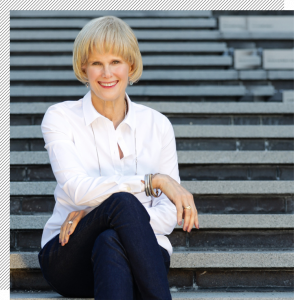The votes are in — content marketing is a must for professions looking to expand their brand. People love to consume content, whether blog posts, podcasts, or videos. So why not give your audience what they want? In this post we’re going to walk you through why content marketing for personal branding and small business is so effective and how you can do it yourself.
Why You Need Content Marketing for Personal Branding
We’ve talked many times about personal branding on this blog. It is essentially treating yourself as a brand, marketing your expertise, and positioning yourself as a reliable expert.
Whether you’re a coach, consultant, or run your own small business, developing your own personal brand is essential. An established personal brand removes many common barriers for clients, since there’s already a level of trust in your expertise. They already feel like they know you because you’ve put in that work of developing your personal bran.
And content marketing can play a major role in this.
But first, let’s be clear. Content marketing isn’t self promotion. It’s not simply talking about yourself. That’s advertising.
Content marketing is all about helping your audience through content. This includes blog posts, social media posts, videos, podcasts, infographics, ebooks…and the list goes on. This content represents you — it’s a sample of your expertise and personality. As people consume it, their trust in you and your brand grows.
Content marketing is a proven strategy used by many big-name experts. You probably even follow people yourself as a direct result of the content that they produce.
Here are just some of the benefits from content marketing for small business…
- Increased authority
- More influence
- Higher level of trust
- Improved search engine rankings for your site
- Lead generation and higher conversion rates
Content marketing is by no means a new strategy — it has some serious data backing it up.
That’s why it’s the top strategy that I recommend to my clients.
Now that we see the important of content marketing for personal branding, let’s discuss several ways to help you rock your content, including the best types of content to create.
How to Rock Your Content Marketing for Personal Branding
1. Blog Regularly
Writing a blog serves many different aspects of your strategy. It builds your credibility, filters more traffic to your website, builds up your SEO, and so much more!
Your blog should first and foremost be relevant to your audience. Choose topics that are on the minds of your audience. If you’re not quite sure what that is, then do some research. Look at what people are talking about on social media or use a tool like BuzzSumo to get a current breakdown of what’s trending in your industry.
And don’t just copy what everybody else is writing about. Look for ways to put your own personal spin on your blog content. Add some expert tips, share your opinion or relevant experiences from your career.
2. Write an Ebook
Ebooks are a much more in-depth content format. They take longer to research and write than your average blog post. But the benefits are also greater. An ebook wins you more credibility among your audience.
It’s also a great way to convert your followers into leads. How? Create a landing page for your ebook with a form that requires someone to input their name, email address, and maybe other information in order to download it.
But where do you begin writing an ebook?
Start by considering the needs of your audience. Take a close look at your buyer personas and determine what their biggest needs and questions are. Look at what is trending and use online tools to help you get a better idea of what your audience wants and needs.
Another crucial aspect of your ebook is its design
When it comes to its design, ensure it’s in line with your current brand style — it should reflect your overall brand.
And make it engaging. Use images, colors, and fonts that attract attention. Break up the text with some fun graphics that drive your points home.
3. Engage on Social Media
As of 2022, it’s estimated that 4.62 billion people are active on social media — so chances are, the majority of your audience are there.
Being active on social media, with a fully optimized profile, allows you to share your content with your audience.
Who in turn may share it their followers, along with audience, possibly adding their thoughts. This extends your reach and exposes your content (and by extension your brand) to new audiences.
There’s also a level of back and forth on social media that you don’t find on other content channels. People can leave comments on your posts, which might include feedback and questions. This is a big opportunity for you and your brand that you don’t want to miss. Make sure to respond to every comment — it helps your community feel connected to you and builds relationships.
4. Guest Post
If you have a blog on your website, why should you go through the effort of guest posting on someone else’s site? Quite simply, guest posting gives you access to that brand’s audience — an audience that is interested in your industry but might not know about you.
Guest posting also helps with your site’s SEO, since your post will most likely include a link back to your website.
How do you do it?
Start by researching influencers in your industry. Follow them on social media. Get an idea for what kind of content they create and what their audience enjoys reading. Look around their website and if they have a page on guest posting guidelines, familiarize yourself with it.
Then it’s time to take that information and use it to brainstorm topics you could write about. If they require you to submit a full blog post, start writing a well-researched post for submission.
Once your article is published, promote it. Let your audience know about it. And don’t forget to politely ask for the brand to include a backlink to your website so you can score with SEO too.
5. Be Visual
Visual is the most valuable currency in content marketing right now. This includes videos, infographics, and even images that you include with your written content.
I think all of us have had the experience of reading a document with huge blocks of text that go on for pages and pages. Even if we enjoy the topic, it can be a little overwhelming. But, pop in some images, graphs, or charts, and it’s a vast improvement. Whether you’re writing a blog post, ebook, or something else, don’t forget to include images.
Another important visual component of content marketing is video.
Whether it’s a YouTube video, a short video on your website, or a quick one on social media, include this in your strategy. You might repurpose a blog post into a quick video with a tool like Lumen5. You might do a quick behind-the-scene tour of your audience on Facebook Live. Or you could do brief interviews with your staff to post on your website or social media.
However you choose to do it, visuals are a great way to boost your overall content strategy.
6. Focus on Quality
No matter what content you create, quality should always be your top priority.
If you decide to create written content, such as blog posts or ebooks, pay close attention to spelling and grammar — simple mistakes like these can slowly erode your authority over time.
For video content, ensure the quality of your video, including sound and lighting, is up to standard. If it’s not, invest in better equipment. You might be surprised how just a small investment can make a big difference in the overall quality of your video.
But quality is about more than just avoiding mistakes — it’s about creating content that is truly valuable. It might mean going a little deeper into a subject and giving your audience information they can’t find elsewhere.
It also means making sure your content is thoroughly researched, accurate, and up-to-date. If there’s even one inaccurate or false statement in your content, it could damage your credibility moving forward.
Concluding Thoughts on Your Content Marketing for Personal Branding
I have been building my personal brand for years now — and content marketing has been my number one strategy along the way. And it’s a strategy that I continue to use, because it works.
That is why I can 100% recommend content marketing for coaches and consultants — and anyone else looking to build their small business.
And I encourage you to do the same!.
Photo by Adam Kool on Unsplash
You May Also Enjoy Reading…





